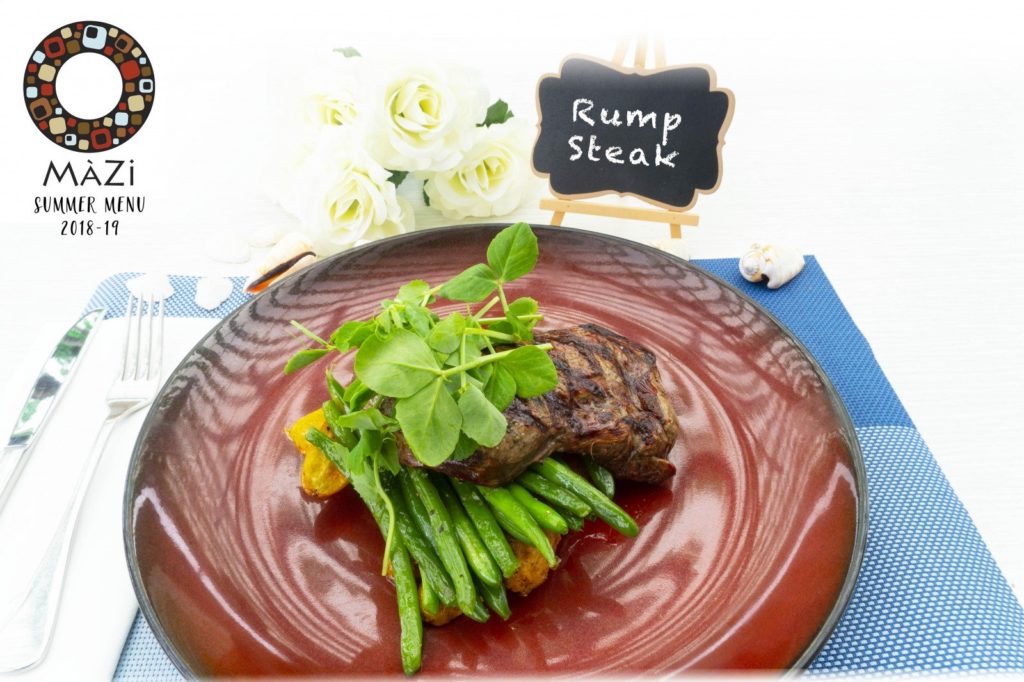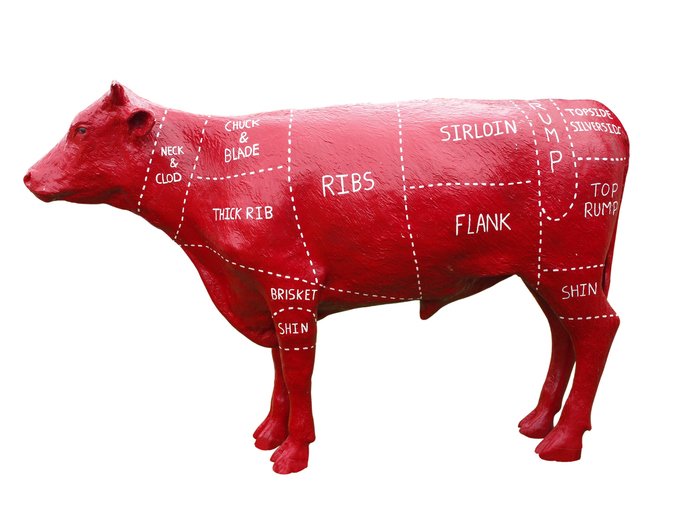Choosing the best cut of steak can be a dilemma, especially if you don’t know what to look for. Rib-eye or sirloin? T-bone or tenderloin? With fewer local butchers offering their advice from behind the counter, it can be hard to know what to choose.
Then there’s the question of how to cook steak so it remains juicy, flavourful and oh-so tender. In this post, we take a look at Australia’s beef-eating history. We also find out once and for all which cut to choose at the supermarket or from the menu.
Mankind: our carnivorous history
Scientists have found evidence that even the earliest humans loved their t-bones. According to Time magazine, pre-humans began eating meat around 2.6 million years ago. They evolved to do so because the herbivorous diet didn’t provide enough calories. By killing instead of picking or digging up their food, the earliest people could get the energy they needed with a lot less chewing.
Harvard University evolutionary biologists undertook a study into the impact of eating meat on the ‘Homo’ species. It found the introduction of meat may have led to important evolutionary changes. As we added prehistoric steak to our diets, man is hypothesised to have developed smaller teeth and a less muscular jaw. As Time reports, this “may have led to other changes in the skull and neck, favouring a larger brain, better thermoregulation and more advanced speech organs.”
So while a vegetarian or vegan diet is by no means unhealthy, it may have been meat which gave us our ‘smarts’.
Early meat eaters tucked in without a grill and probably only consumed small amounts at a time. It wasn’t until that good old invention, fire, came along that things changed. Using fire, humans discovered the delights of a well-cooked piece of rump. From here, our hunting and weapon making tools evolved to catching meat easier. The next big change happened in the Neolithic era (around 6,000 years ago). Someone in the area now known as Israel came up with the bright idea of staying in one place and farming livestock.
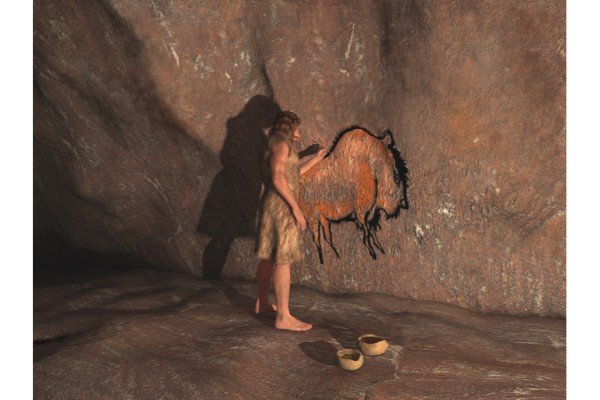
Australia: land of the cow
Besides your resident vegetarian, who doesn’t love a steak? Beef is the third most widely consumed meat in the world after pork and chicken. The USA, Brazil and China eat the most beef, but Australia is one of the top three exporters of the product.
Beef cattle production is a well-established and significant industry in Australia. Beef cattle are produced in all states and territories. According to AgriFutures Australia, our nation produces three per cent of the world’s total supply of beef each year.
If you did a head-count of Aussie cows, you’d come back with over 25 million. That’s enough for every person in Australia to own a cow, with a few hundred thousand left over. The herds are housed on over 47,000 cattle properties, and are either grain or grass-fed.
Australian cattle and calf production is valued at AU$12.7 billion. It accounts for 55 per cent of agricultural farms in Australia. One of the reasons it is so popular is beef cattle can be raised in almost any part of the country. While they do need shade, windbreaks, food and water, farmers don’t have to create expensive shelters for their bovine livestock.
Depending on their age and whether they are producing milk, cows need between 25 and 140 litres of water per day. This statistic alone makes it easy to understand why droughts present such emergencies for Australian farmers. If you did have a cow of your own, as an average Aussie you’d eat about a fifth of it per year (that’s 33kg).
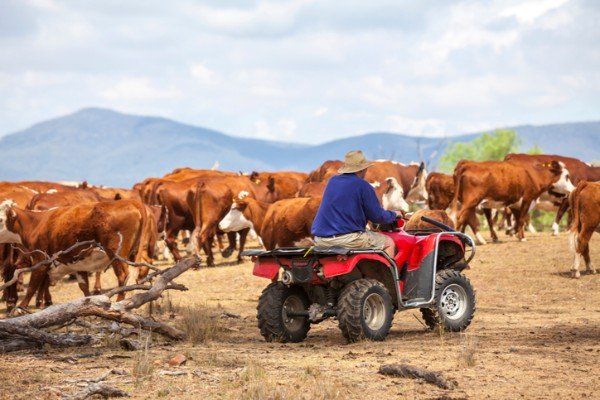
Butchery as a profession
There aren’t many of us who would know what to do if faced with a whole cow and a carving knife. It’s no wonder butchery is one of the world’s oldest professions. It takes skill and understanding to produce the maximum amount of edible meat from a carcass.
According to the US Butcher’s Guild, “Scientists discovered the remains of a butchered giant sloth at a Florida sinkhole. The remains are thought to be about 12,000 years old. An earlier discovery of a sharpened stick and tortoise remains had led them to believe the area was used as a butcher shop for early man.”
Fried sloth, anyone?
The Bible also mentions the butchering of animals. Roman artwork from the year 2 AD depicts a butcher, busy at his chopping block with cleaver in hand. In England, documentation shows The Worshipful Company of Butchers Guild was formed as early as 975 AD. Apparently, early health regulations meant any olden day butchers found selling rotten meat would be seriously dealt with. This involved being dragged through the streets, covered in excrement, made to drink sour beer and slammed in the stocks!
Butchers mainly served the nobility in Medieval England, with few peasants taking home a store-bought sirloin after a hard day’s work. The butcher was well-respected, as he understood and employed all-important hygiene techniques in the treacherous days before antibiotics.
The profession remains as important to this day. To qualify as a butcher, you must complete an Apprenticeship in Meat Processing. This teaches the cuts, instruments (knives etc) and cutting techniques of the pros. While the local butcher store on main street is becoming more rare, butchers are not. Nowadays you’ll find them working in-house at supermarkets or behind the speciality counter at fancy providore centres and department stores.

Get to know the cuts
When it comes to steak, not all cuts are created equal. It can be confusing to know what you’re getting and how to cook it. To help you though, here’s a rundown of the difference between your main options. Please do bear in mind that definitions can vary, depending on where you live.
Sirloin
Steak aficionados will often choose a sirloin over anything else, believing it to be the best cut of steak. Coming from the hindquarter of the cow, the sirloin is known for being very tender and easy to eat. There is flexibility with a sirloin and it can be sautéed, grilled, barbecued or pan fried.
When cooked the right way, you can expect a firm texture and a rich flavour from your sirloin. It shouldn’t need a lot of accompanying sauce. Some restaurants may refer to your sirloin as a New York Steak or a New York Strip.
Eye fillet
Another tender cut, eye fillet (or tenderloin) has a subtle flavour. This piece of beef comes from the cow’s back, specifically a strip of muscle behind the backbone. It isn’t integral to the cow’s daily routine of standing, walking and eating so it tends to be a lovely soft cut of meat.
Top chefs recommend against leaving an eye fillet on the grill for too long, suggesting it be cooked to rare or medium rare.
Prime Rib / Standing Rib Roast
This is the piece of meat that almost looks as though it has come from a dinosaur, with a lot of meat and bone. Prime rib is the meat from the cow’s rib area and is also known for being tender and juicy. It delivers an excellent flavour without needing to be dressed up. This cut is also flexible and while it tends to be roasted, it can also be sauteed, broiled, pan-fried or grilled. For a premium prime rib experience, some experts recommend an 18 hour slow-cook, followed by a quick trip to a hot grill before serving.
Scotch Fillet / Ribeye
One of the most popular steaks, scotch fillet is also called ribeye. It also comes from the rib area but is a smaller piece of meat and is sold either without the bone or with a small bone. Scotch fillet can be roasted, barbecued, grilled, pan-fried or even stir-fried. You can expect a little more fat from this cut, which gives a stronger flavour and also means it can be cooked for longer.
T-bone / Porterhouse
This one is hard to miss because of the t-shaped bone. The meat you get will have sirloin on one side and tenderloin on the other. Juicy, beefy and with plenty of marbling, T-bone is ideal for grilling. You’ll get a lot of meat on your plate when you order, so make sure you show up hungry. Sometimes a T-bone is called a Porterhouse but sometimes the tenderloin is served on its own and also referred to as a Porterhouse steak – just so you know!
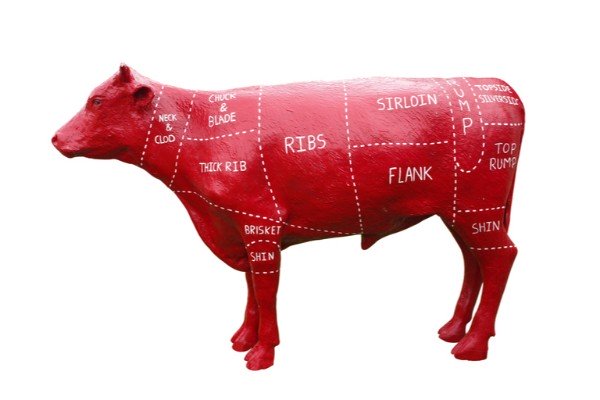
How to identify the best cut of steak
Generally speaking, the less exercised areas of the cow’s body produce the tastiest, most tender pieces of meat. These are where the above-mentioned cuts tend to come from. There are lots of other cuts which are usually recommended for casseroles or slow cooking.
Website Chefsteps.com explains that meat with a lot of visible fat (marbling) usually has a more robust, intense flavour than lean meat. This type of steak tends to be more expensive, because of the cost of fattening up the cow. If you want a melt-in-your-mouth meat experience, go for a sirloin or a good quality t-bone. If you do so, be aware that the more tender the meat is, the less flavourful it is likely to be.
When examining the selection at your supermarket or butcher, look at the colour and texture of the meat. It should be a strong red colour, without too much visible connective tissue running through it (this adds to the chewiness). The most expensive cuts of meat aren’t always the best because it depends on the recipe you have in mind. Don’t be afraid to ask for advice when you’re meat shopping. Let the butcher know what kind of surface you will be cooking on and what recipe you intend to work with. They’ll be able to share their recommendations and show you how to pick out the best cut of steak for the job.

How to cook the perfect steak and achieve legend status among your friends
Burnt to a crisp or bl**dy as hell? No matter how you like your steak, it has to be carefully prepared to maximise the taste.
There is no exact way to cook the perfect steak and different chefs have different recommendations. For example, Jamie Oliver advises you give the steak an hour at room temperature first. Before you bring it anywhere near the grill, rub on some olive oil, pepper and salt. Jamie’s advice is to put it onto an already hot surface in order to caramelise the meat and give it a ‘crust’. Turn your steak every minute (one tip is to quickly rub it with some garlic, butter and herbs before doing so). Don’t leave it on the heat for more than six minutes or it will begin to dry out and become tough.
Before serving, ‘rest’ your steak in its juices for a couple of minutes and rub with some extra olive oil and butter.
Adding to Jamie’s expertise, Taste.com.au recommends brushing the steak with oil rather than the pan. It suggests cooking a 2 cm-thick piece of steak as follows:
- 2-3 minutes each side for rare
- 4 minutes each side for medium
- 5-6 minutes each side for well-done.
Taste goes on to say “To test if your steak is done, press the centre with the back of the tongs. The steak will feel soft if it’s rare, slightly firmer and springy when it’s medium and very firm when it’s well-done.”
As for the ultimate question of rare, medium or well done, some experts will tell you different cuts are better suited to different levels of cooking. At the end of the day it comes down to your personal preference. When meat is well done, it will be completely grey/brown, with no pink. A rare steak has a seared outer layer and can be warm to cool in the middle, even appearing a bit raw at the centre. Medium will provide a smaller centre of pink, depending on the scale you request.
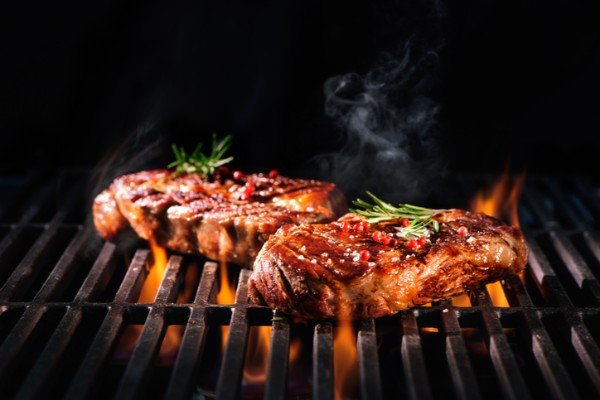
Where to get the best cut of steak
Lantern Club is home to our wonderful in-house restaurant, MàZi. With Mediterranean influences, meat is definitely on the menu. MàZi’s new chef June is a stickler for quality and takes immense pride in preparing some of the most delicious steak and beef dishes you’ll ever taste.
Book a table at MàZi, experience our tantalising menu and get to know our new chef.
